How to make your Christmas more environmentally friendly
Christmas is a time of celebration, but once the party's over, plenty of garbage is hauled to the curb.
Environmental group Zero Waste Canada estimates that from mid-November to mid-January, the average Canadian generates about 25 per cent more trash than during the rest of the year.
The reason: people buy more stuff over the holidays, and a lot of it — from shiny wrapping paper to glittery cards — typically can't go in your recycling blue bin, so it's destined for the landfill.
To help Canadians celebrate a greener Christmas this year, here are some of the season's worst offenders and tips for cutting down that holiday trash.
Beware of slick gift wrap
To avoid unnecessary waste, opt for the plainest wrapping paper. Different materials generally need to be separated before recycling, so any gift wrap involving foil, laminated or metallic coating or sparkles will likely be rejected by your blue bin program.
"Even though it's made of paper, because there's this other coating, whether it be plastic, whether it be wax, it kind of messes up [the recycling process]," said Calvin Lakhan, a research scientist at York University in Toronto.
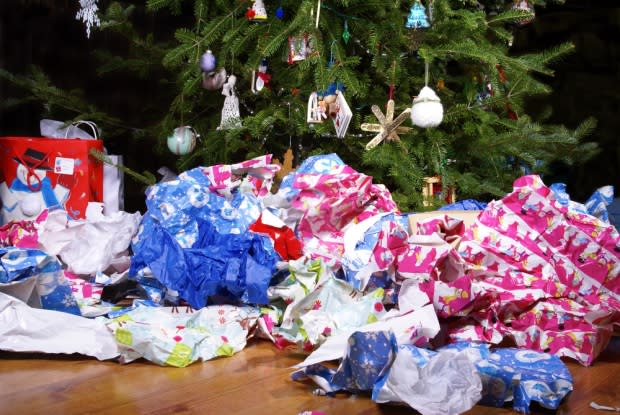
Blue box programs also generally don't want tinsel or gift leftovers such as bows, ribbons, cellophane and tape because these items are made of materials that are difficult to recycle.
On top of that, ribbons and tinsel are a recycling facility's worst nightmare because they can get stuck in the sorting machines.
"It will get literally jammed inside of the wheels and then it causes massive disruptions to the system," said Lakhan.
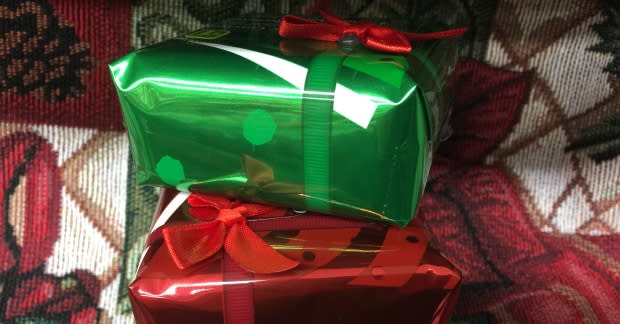
If you're shopping online, you may start piling up waste even before the gift wrapping begins. Much of the protective packaging used to ship goods, such as bubble wrap and foam chips, is also difficult to recycle and likely can't go in your blue box.
"At Christmas, the only thing that I'd say is readily recyclable is the cardboard packaging that Amazon ships your stuff in," said Lakhan.
However, if you live in British Columbia — and you're willing to make the extra effort — you can take some of those trickier-to-recycle items, such as bubble wrap and foil wrapping paper, to recycling depots throughout the province.
But even those depots won't take ribbons and bows, said Harvinder Aujla, information services manager with the Recycling Council of B.C. She also warns that municipalities will refuse to compost natural Christmas trees if that pesky tinsel is still stuck to it.
"They'll pull it and it will just be a garbage item."
Dark side of glitter
Glitter is all over the place during the holidays, used to jazz up things like tree ornaments, wrapping paper and Christmas cards.
It also turns those items into garbage because it's virtually impossible to remove every sparkle from a product before it can be recycled.
And glitter has an even darker side — it could actually harm marine life. That's because it's typically made from plastic and has a habit of leaking into the environment.
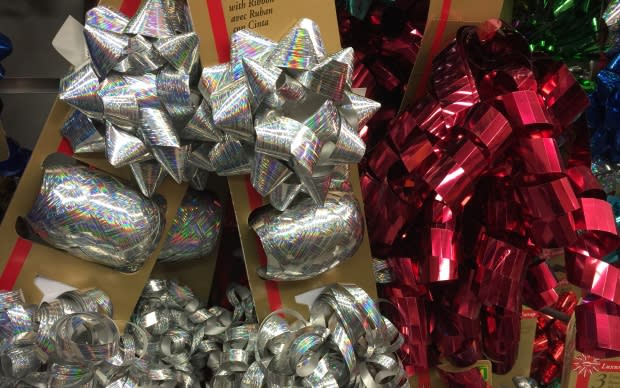
"The little sparkles stick to your hands and they get stuck to your clothing and they end up going down the drain or being washed away into our water systems," said Karen Halley, a spokesperson with GreenUP, an environmental community group in Ontario.
Glitter's ease of travel makes it one of the many microplastic pollutants fish may wind up ingesting. Scientists have become increasingly concerned about the negative impact of microplastics on aquatic life.
"It's hard to think your Christmas bauble that you just bought is ever going to affect marine life, but it does happen," said Halley.
A greener Christmas
There are many simple ways Canadians can cut down on waste over the holidays.
Besides avoiding anything that glitters, Halley recommends keeping a box by the tree to store gift leftovers such as bows and ribbons.
"Throw all the reusable stuff in the box and then take that box away and bring it out next year."
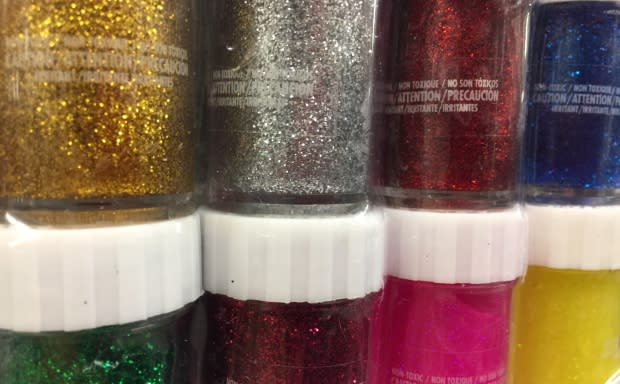
It may be difficult to reuse fragile gift wrap, but there are plenty of alternatives that are more eco-friendly.
Aujla with B.C.'s Recycling Council recommends using a reusable paper or cloth gift bag or wrapping presents in eye-catching paper such as old comics or maps or an expired calendar.
She also suggests wrapping a gift by using another gift such as a knapsack or T-shirt.
"If you've got somebody who likes to bake, wrap their gift in tea towels."
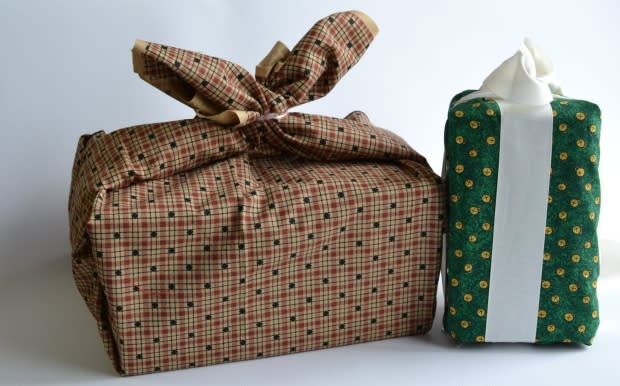
Sophie Jacazio in Toronto cuts down on gift wrapping garbage by giving "experiential" presents to many family members and friends, such as tickets to an exhibit or a night out together.
"I will be most definitely taking some people out for dinner. That to me is a good gift and it enables people to reconnect and spend time together."
She believes experiences can offer more satisfaction than material gifts — and they'll never wind up in a landfill
"They're a lot more thoughtful and respectful of the people I'm gifting them to — and the environment."

